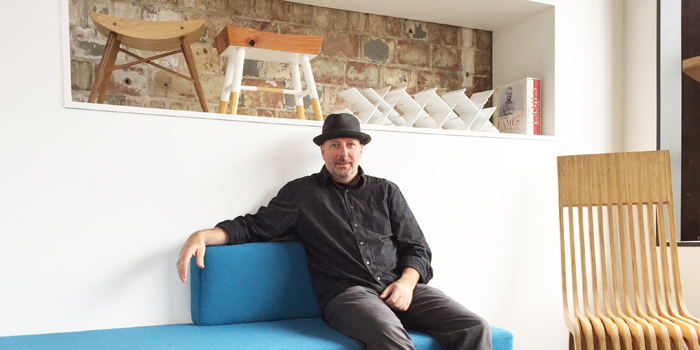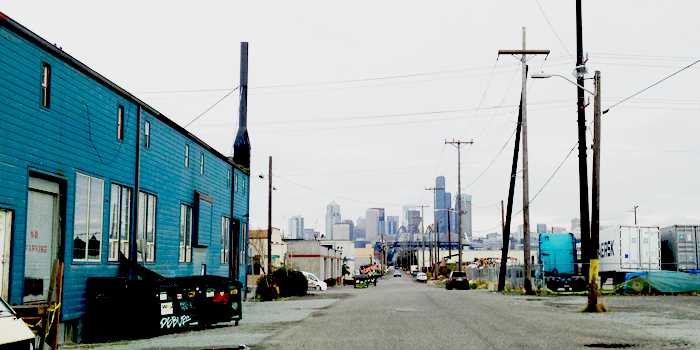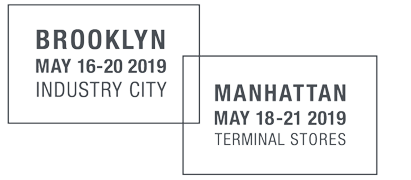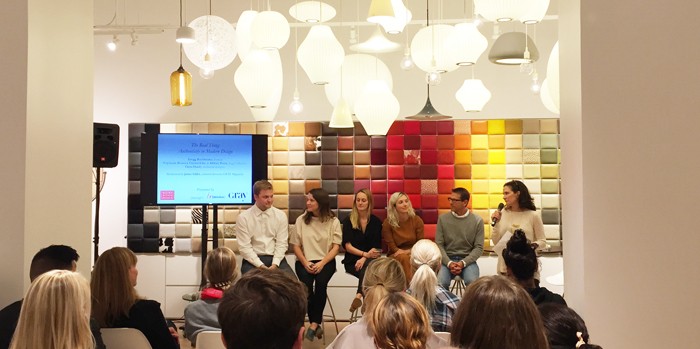A peak into the Seattle design scene
In September, WantedDesign packed up our raincoats (which, luckily, went unused) and flew out to Seattle where we hosted an event in partnership with Design Within Reach, Be Original Americas and Gray magazine. DWR is on a mission to make authentic modern design accessible, and we were honored to team up with them to reach out to local designers and design lovers. We had a great talk about authenticity in design with guest speakers Emeco CEO and President Gregg Buchbinder, designer Chris Hardy, and the talented trio behind Brooklyn-based Egg Collective.
However, before we got down to business, we had some time to traverse the city and learn more about the vibrant local design scene. We visited the latest exhibits at the Bellevue Arts Museum, the Pacific Northwest’s preeminent center for art, craft, and design, toured the design studios of Urbancase and Graypants, and shopped at local concept stores along the way. That was all before stopping by the famous Seattle Central Library designed by architect Rem Koolhaas, a glass and steel structure that won the AIA Honor Award for Architecture in 2005.

Counter Culture exhibit at the Bellevue Arts Museum, on view until January 10, 2016
The city’s spirit of innovation was palpable, from a true respect for the environment to an overall sense of authenticity. We fell in love with Seattle, perhaps for the same reasons than Darin Montgomery, founder of Urbancase, originally from Colorado, explained to us: “There are many things that keep me in Seattle: the natural beauty, energy of the city, and the people are at the top of my list.” more
We also discovered a strong creative and collaborative community here, with which Montgomery agreed: “I believe what connects the majority of the community is a desire to see each other succeed.” And we haven’t even mentioned all the delicious restaurants and coffee shops–it is the home of Starbucks after all.

Darin Montgomery, Urbancase
After all this, we sat down with Theresa Crim, the proprietor of Design Within Reach Seattle, to discuss what makes the city’s design scene special. Crim, who was born and raised in Seattle, shared her vision for local design as well as her (current) favorite DWR piece.
WD: What are your clients in Seattle expecting and what do they experience once they walk through the door?
TC: We have a wide range of clientele in Seattle. It’s a mix of interior designers, architects, celebrities, even people who are just beginning to learn about design. Recently we’ve seen an increase in the number of young people who are coming in excited to learn about traditional craftsmen and buying classic pieces. They want to learn about the history and stories behind the classic pieces. Over the past four years, I’ve seen a new group of young shoppers investing in pieces that will last a lifetime, which is so wonderful.
WD: Is there a big community of informed designers locally?
TC: Seattle has a group of courageous, exciting and supportive designers. We support one another. We cheer each other on, and we want to see one another succeed in a big, big way.

SoDo industrial district, Seattle
WD: What do you think original design means to younger shoppers, especially versus a knockoff? Do you think they are interested in the idea of authenticity?
TC: It goes back to education. There is absolutely a market that wants to be educated and is interested in authentic design, and its importance is gaining momentum thanks to organizations like Be Original Americas. One of the fundamental ways to truly appreciate original design is to connect with it on a personal level. It doesn’t matter if you only own a few pieces or even if those few pieces don’t go together. If a personal connection exists it shows and forms a foundation for appreciating truly original, authentic design.
WD: What is your favorite piece at Design Within Reach at the moment?
TC: Right now, it’s the Hans Wegner Easy Chair. It’s such a beautiful example of how a designer traveled around the world and brought back a very specific process and idea from his time spent in Asia. The woven seat and back created using from one continuous cord. There is a hole at the top of the chair where the weaving begins and ends. It may look like a mistake but Wegner purposely kept this visible in the back of the chair as a reminder of the human element within each piece. A machine didn’t make it, a human did, and only a human could make that mistake right. It’s a handcrafted piece of furniture that stems from the creativity, skill, and vision of Hans Wegner. That’s what you’re investing in: the time, history, and effort. Artists have this kind of responsibility to interpret the world around them for the general public so that we can grasp it because most people don’t have the ability to do that.
www.dwr.com


